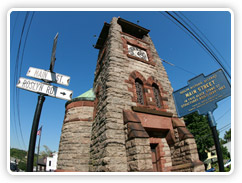If you plan to buy your next home in your current town, you probably think you already know precisely what neighborhood(s) you’d entertain. You might have driven around and spotted a street you’d love to call your own, or maybe you’ve always heard rave reviews of the schools, shops and other quintessential elements of a particular part of town. But there are numerous Internet resources that can surface gems you might not know about.
Here are a handful of the online neighborhood-finding resources that I believe are vastly under-utilized by house hunters:
1. NabeWise is where you go to get a real taste for a neighborhood’s flavor, online. Call it gritty or peaceful; these are actual neighborhood reputation label options that the site offers and that visitors freely use. Beyond the helpful and, in my experience, accurate neighborhood “flavor” ratings and many photos of the most popular neighborhoods in the couple of dozen cities it covers, NabeWise also offers helpful, insight-rich blog posts from neighborhood residents.
2. Nextdoor is a site where nothing but neighborhood social networks live and operate in one user-friendly place. It’s relatively new, so chances are good that your target neighborhood might not be there (yet), but if you do happen to see that the neighborhood of your dreams has a Nextdoor network, that’s a very good sign.
3. Walk Score If you’re looking for a neighborhood with high “walk-ability” (as defined by WalkScore.com to encompass everything from ample amenities for everyone from bus riders to walkers to bicyclists, to shopping areas where the storefronts are very near to the sidewalks), this is the authoritative resource. Walk Score actually assigns cities, neighborhoods, streets and individual addresses a numerical Walk Score rating that is exceedingly useful in helping buyers compare homes and neighborhoods on walk-ability; helping relocators start to get a feel for the daily lifestyle they would experience in various parts of the same town; and even helping sellers communicate their home’s walk-ability in a meaningful way to buyers.
4. StreetAdvisor is like Yelp for neighborhoods: You type in a city price range or “personality” factor, and it gives you the local neighborhoods that have rated the highest on these elements, along with numerous reviews of that part of town by the locals who live there.
5. Trulia Local offers all sorts of beautiful, easy-to-use, data-driven interactive maps for home-buyers considering a property in a given neighborhood. Type in a given city, and you’ll be given color-coded heat maps that allow you to surface, in a single click, everything from the rate of violent-to-non-violent crimes across town and in specific, zoomed-in neighborhoods, to grocery stores, restaurants, banks and post offices and even the actual homes listed for sale overlaid on this same map with little price tags, so you can see at a glance how prices are different in different parts of town.


